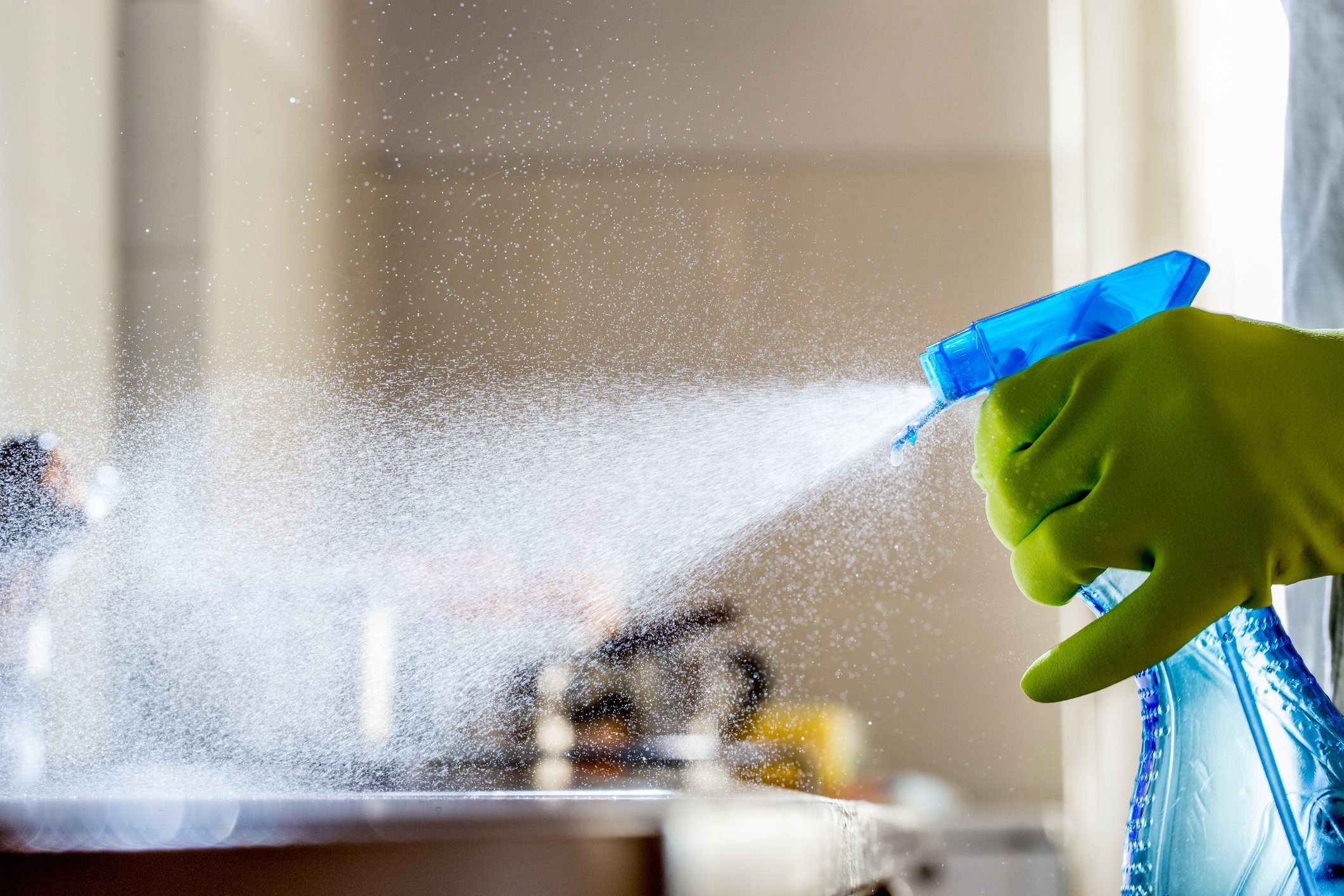Dust isn't just dust—it's a veritable smorgasbord of grossness containing mold, skin cells, dust mites, and bacteria. Learn how to prevent it with a homemade dusting spray.

This DIY Cleaner Will Prevent Dust From Building Up in Your Home

Keeping your house clean can be challenging, especially since dust and allergens seem to accumulate in the wrong areas. A buildup of dust is sure to leave you feeling unwell. Schar Ward, an author and the founder of the professional cleaning company Domestic Engineering, explains that dust “contains a mixture of dirt, skin cells, pet dander, pollen, and more.” Not exactly the kinds of things you want floating around your home unchecked.
Don’t get me wrong, vacuuming is a great way to pick up dirt from around the house, but sometimes you will find that some areas collect more household dust than others. Ward says regular dusting is crucial because it “helps to minimize these particles in your living environment, which can help prevent respiratory issues and allergies.”
Regular dusting still needs to be done properly. Ward has a five-step system, complete with explanations for each step, that she uses and recommends:
- Start from the top. Always begin dusting from the highest surfaces and work your way down. This way, any dust that falls will be cleaned up later. Start with ceiling fans, high shelves, and light fixtures
- Dust in sections. Break your home down into manageable sections—start with one room or area at a time. This method makes it less overwhelming and allows you to see progress.
- Don’t forget electronics. Use a microfiber cloth or a special duster for electronics. Avoid using liquid cleaners directly on screens; they can damage the surface.
- Focus on furniture. When dusting furniture, use your cloth in a top-to-bottom motion to pick up dust effectively. Pay particular attention to shelves, baseboards, and the nooks and crannies of furniture.
- Last but not least—floors. Once everything above the floors is dust-free, vacuum with a HEPA filter or a damp mop to clean the floors. This will help eliminate any dust that has settled.
She also recommends regular decluttering, washing bedding on a consistent schedule, and utilizing HEPA air purifiers to help reduce the amount of dust floating around your house.
Once you’ve mastered your routine, try this DIY dusting spray. It’s an easy but effective way to maintain lower dust levels.
On This Page
How Do You Make a DIY Dust Cleaner?
Homemade dust cleaners are a great way to make your home smell fresh and clean without spending much money. They’re also easy to make, which makes them a great option if you’re on a budget.
Here’s how to make homemade cleaner:
- Combine 1 cup of water, 1/4 cup of white distilled vinegar and 2 tablespoons of olive oil in a spray bottle. Shake well to combine ingredients.
- Sprinkle five drops of essential oil onto the mixture (or up to 10 drops for an extra-strong scent). You can use any essential oil you like; some popular choices include eucalyptus, lavender, grapefruit or lemon.
- Spray the mixture on furniture that needs cleaning and wipe off with a clean cloth or paper towel when done.
What Kinds of Surfaces Does This DIY Dust Cleaner Work On?
This cleaner can work on many surfaces—but really does wonders on flooring, including carpeting and hardwood floors. It works on walls and ceilings, too. It’s a simple fix for getting rid of dust, dirt and other debris that may be present in your house.
Things To Avoid Dusting With This DIY Dust Cleaner
Bruce Vance, a certified house cleaning technician with Town & Country Cleaning Services, says that this is not an ideal cleaner for lacquered furniture or plastics. While an oil cleaner can work well on waxed or oiled furniture, keeping it clean and maintaining its shine, that’s not the case for other items. Anything with a hard coating won’t absorb the oil, and it will end up trapping dust instead.
Where To Store It
It is important to store your dusting spray in a dry, cool place. You should also keep it away from direct sunlight and heat sources.
Dust cleaners can be stored in a cabinet, shelf, or closet near the floor—these places are best as they have limited exposure to sunlight or heat sources. Consider reusable glass spray bottles for easy refill and a sustainable cleaning solution.
When stored properly, this DIY dusting spray can last for years.
What Wipes Should You Use With This DIY Dust Cleaner?
You need to use dry and damp wipes. If the wipes are too wet, they will leave too much moisture on your furniture or flooring surface. The moisture can leave excess oil behind, which could stain certain surfaces or leave them feeling dirty.
It would help if you also avoided scented wipes, as they can leave a smell behind after cleaning. Instead, choose unscented, biodegradable wipes from natural ingredients like cotton and paper pulp. Or, consider using washable microfiber towels—which are just as sustainable and even more cost-effective. Both Ward and Vance heavily endorse the use of microfiber cloths.
About the Experts
- Bruce Vance is a certified house cleaning technician with Town & Country Cleaning Services.
- Schar Ward founded Domestic Engineering, a professional cleaning company, in 1973. Her latest book, Are You a Junkaholic?, published November 1, 2023, is a guide for hoarders. Ward has appeared on HGTV and many local television shows. She was the Green Cleaning Lady for Twin Cities Live in Saint Paul, Minnesota, and wrote a cleaning column for Dog Fancy magazine for two years.




















